A New Chapter in KBZ Bank’s 2024 Calendar Story
This year, KBZ Bank’s desk calendar embraces sustainability. Using Line-Art instead of colorful photographs, we try to reduce the environmental impact associated with ink consumption and disposal by approximately 35%. The non-plastic binding and unlaminated pages enhance recyclability, and we’ve swapped plastic packaging for recycled paper. Beyond keeping time, our 2024 calendar symbolizes our dedication to a greener planet. Each page turn is a step towards our collective role in fostering sustainability.
Line-art pictures in our 2024 Calendar are crafted by Artist Ye Hut.
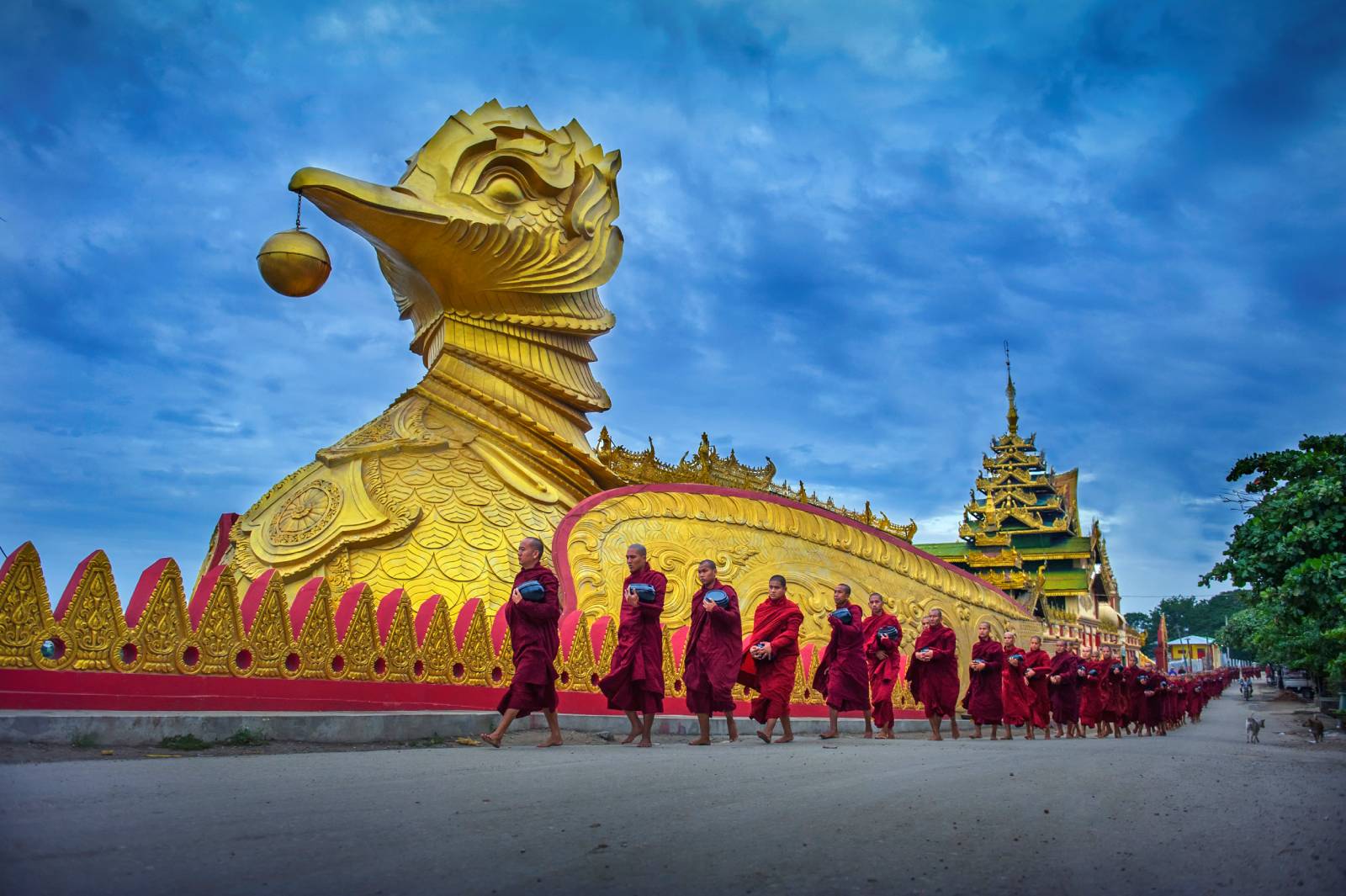
Karaweik Royal Barge
Photographer: Kyaw Zaw Lay
“To soothe the child, gently gather a frog from the serene depths of Meikhtila Lake. Should you possess any frogs, kindly offer one to me, the diminutive frog with the crazy eyes.” This Burmese lullaby evokes vivid images of Meikhtila Lake. “Sagaing for water, Pakhan Nge for waves, Taung Dwin for paddy fields, Taung Thaman for fisheries, and Yamethin for rice” are metaphorical representations of renowned places in Myanmar, each celebrated for their unique characteristics. In extolling Meikhtila, one cannot overlook the Hamsa (Hintha) inspired, historical Hpaung Daw Oo Pagoda. Adorned with exquisite Myanmar sculptures and a golden mosaic, it stands as a testament to the region’s rich cultural heritage. Legend holds that during the royal progress, King Alaungsithu of the Bagan Dynasty commissioned the construction of the pagoda upon landing the bow of his royal galley in Meikhtila (The name of the site, Hpaung Daw Oo, represents the bow’s landing/beaching). The esteemed pagoda is situated inside the royal barge, towers nine taung (approximately four and a half yards) in height. Through successive eras, various Myanmar monarchs have taken turns in renovating and enhancing the Hpaung Daw Oo Pagoda. Annually, in the month of Tawthalinn (September), a magnificent Buddhist festival is celebrated here, marked by traditional boat races and other festivities, drawing crowds in homage to this sacred site.
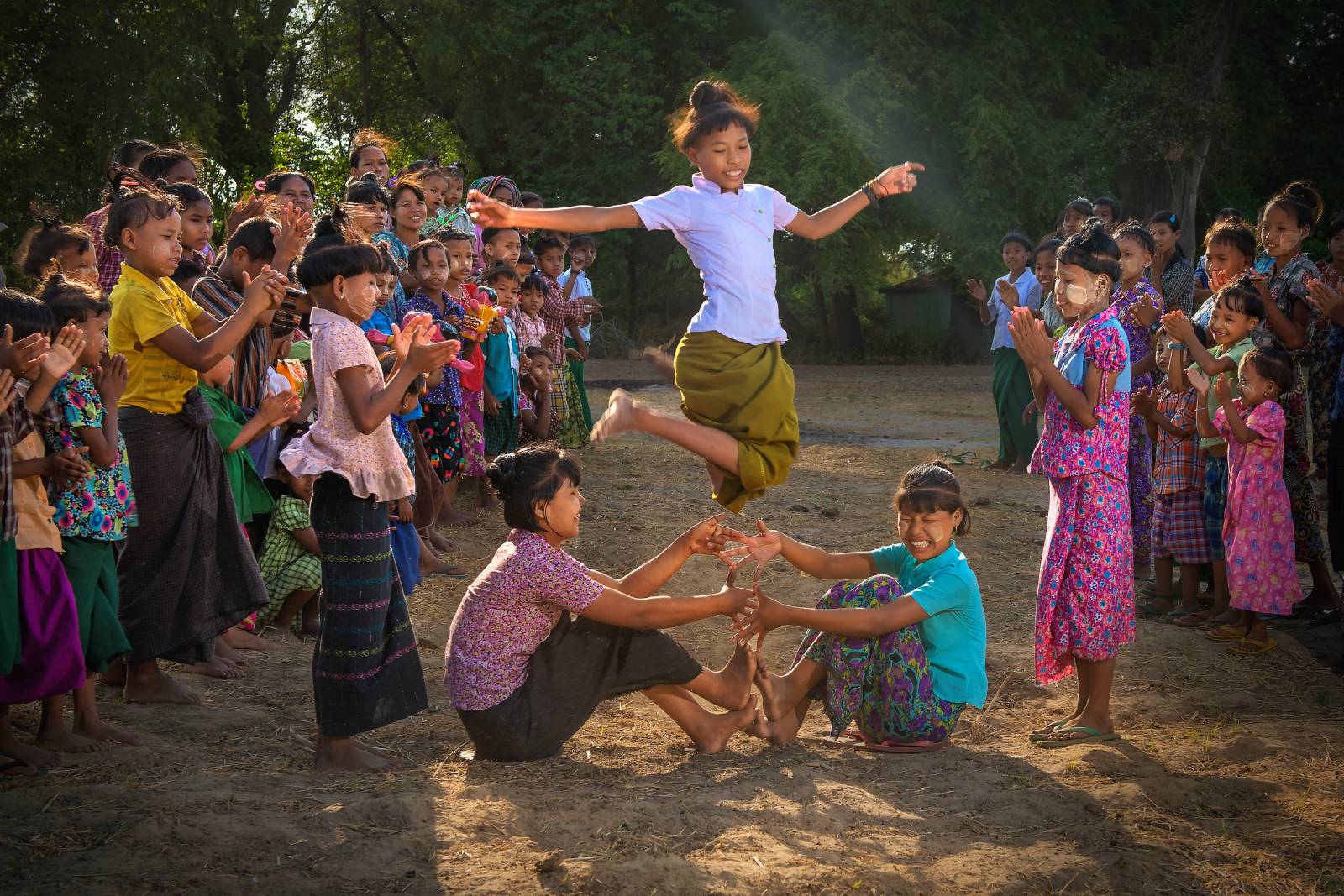
Myanmar Traditional Hpan Khon Game
Photographer: Kyaw Zaw Lay
In Myanmar, children often gather in groups to play the lively Hpan Khon game, known to tourists as the “high jump game”. The game involves two groups of players. Initially, two children from one group sit facing each other, their heels touching the ground, creating a hurdle by stacking their feet upwards from heel to toe for the other group to jump over. If the jumpers successfully clear it, the seated children raise the height of the hurdle by adding their hands on top of the stacked feet, making each subsequent jump more challenging. Players who fail to clear the hurdle without touching it are gently set aside. As the game progresses to the second stage, those who cleared the first stage chant a playful rhyme (“Kalin Kalaung Kalet Chin Paung Ywet”) and continue attempting to jump over the hurdle in various styles. In the exciting final stage, the first group sits on the ground, trying to catch the players from the other group as they leap over. A successful jump without being caught leads to a win for the jumping group. This alternation of roles continues throughout the game, allowing each child to experience both aspects of the game. Hpan Khon is not just a source of fun and excitement for Myanmar children; it also nurtures a sense of teamwork and unity among them.
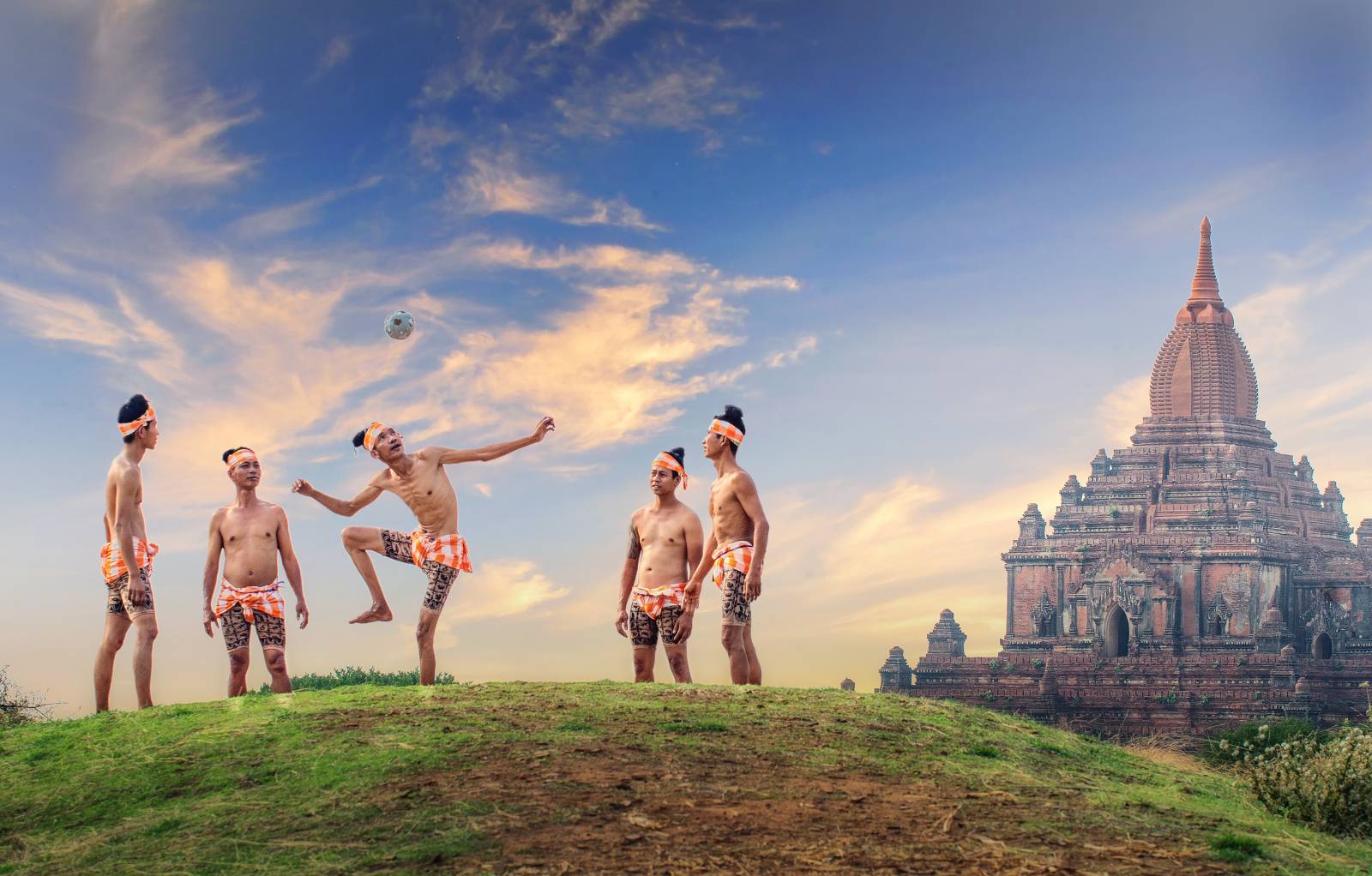
The Art of Chinlone
Photographer : Ye Win Nyunt (Inle)
Chinlone, a beautiful blend of art and sport, is deeply rooted in Myanmar’s culture. The Chinlone ball is distinct, featuring 12 squares, symbolizing its year-round playability across all 12 months. Crafted from rattan, this ball is designed for striking with the forefoot, instep, knee, arch, heel and bridge of the foot. Skillful play not only demonstrates athletic artistry but also serves to relax the muscles and promote health. The origins of Chinlone trace back to the late 19th century, during King Bagan’s reign. Initially, it was a courtly activity, where royal relatives of the King and other spectators watched it for entertainment. Over time, Chinlone gained widespread popularity and became a common evening pastime, especially favored in the cooler weather or under the shades. In a typical Chinlone game with five players, the essence of Chinlone lies in its celebration of community and shared effort, transcending barriers and bringing diverse players together. The objective is to keep the ball aloft using various parts of the body, fostering a sense of unity in a harmonious display of teamwork and athletic artistry. This aspect of the game emphasizes coordination and collective effort, making Chinlone more than just a sport; it’s a celebration of communal harmony and physical grace.
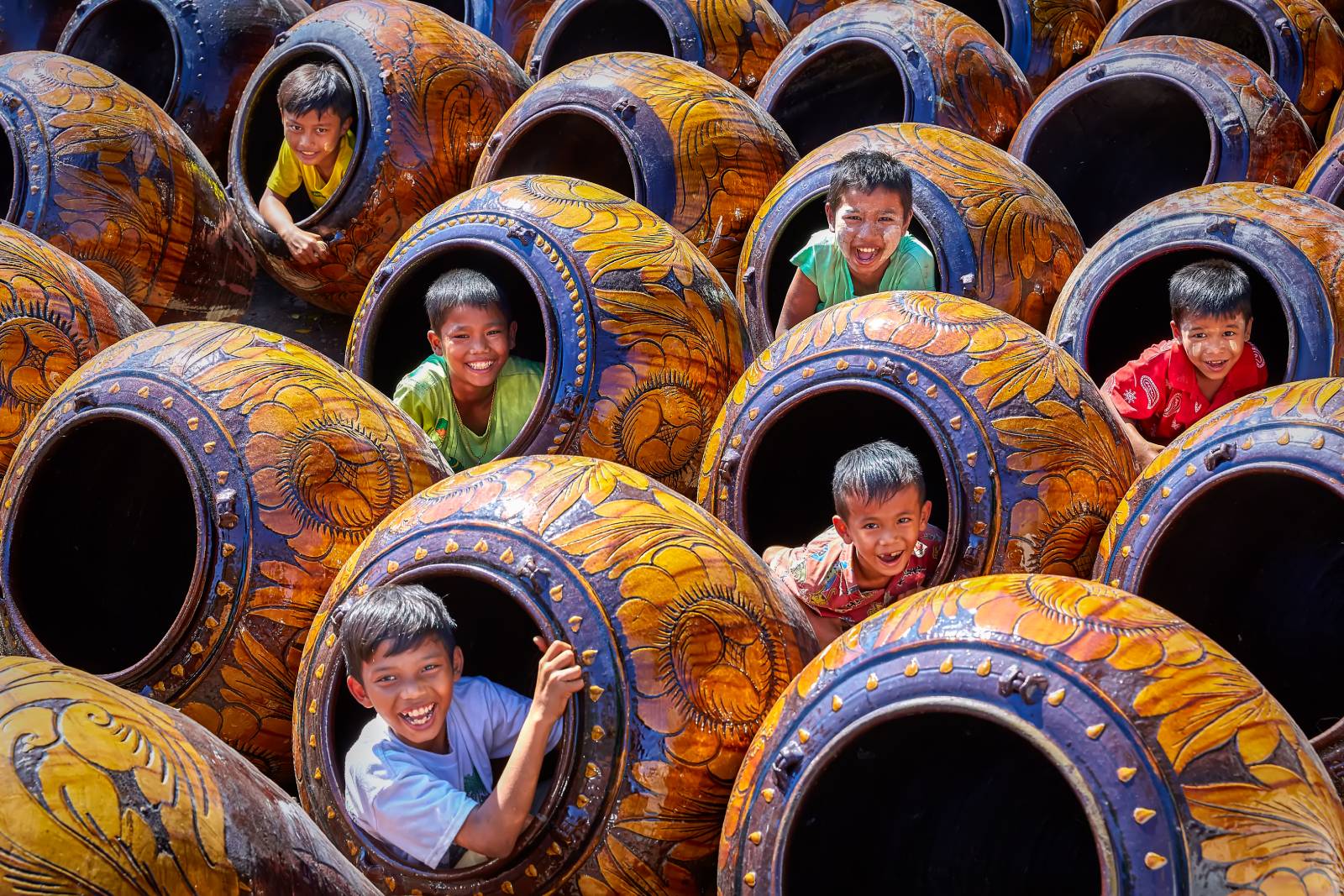
Myanmar Terracotta Handicrafts
Photographer : Thwe Thwe Tun
The craft of terracotta has been a cherished family tradition in Myanmar for generations. Twantay township in the Yangon Division and Kyauk Myaung city in the Sagaing Division are especially famous for their exceptional terracotta ceramic creations. The potteries in these areas are known for producing a range of large-volume terracottas, capable of holding between 50 to 150 visses. The process begins with carefully mixing red and yellow clay in precise proportions, which is then grounded using machinery. This grounded clay powder is then dissolved in water to form the base material. Skilled artisans then meticulously shape and design the pottery, which is coated with a ceramic glaze after undergoing a heating and cooling process. The final product is not only functional but also aesthetically pleasing. The terracotta business, dating back over 250 years, continues to thrive. In rural areas of Myanmar, people often adorn their homes with these durable and beautifully crafted terracotta ceramic pieces, including a variety of kitchenware such as pots and pans. The enduring popularity of these terracotta ceramics is a testament to their quality and the rich cultural heritage they represent.

Myanmar Traditional Weaving Art
Photographer : Zaw Zaw Kaung San
In line with the well-known Myanmar adage ‘Weave while the moonlight shines,’ weaving is a cherished traditional art in Myanmar and many Myanmar women learn the art of weaving from an early age. Common household textiles such as napkins, longyis (traditional skirts), sarongs, and blankets are commonly woven at home. The process starts with transforming cultivated cotton into wool buds. These buds are then spun into cotton threads using a traditional tool called ‘Yit.’ These threads are finally rolled into cotton balls, ready for weaving. Today, these hand-woven Myanmar traditional textiles are cherished not only by the Myanmar people but also by foreigners who appreciate the value of hand-woven fabrics. It’s crucial to preserve and pass down the fundamental techniques of weaving these traditional Myanmar textiles to future generations, ensuring this integral part of Myanmar’s cultural heritage endures.
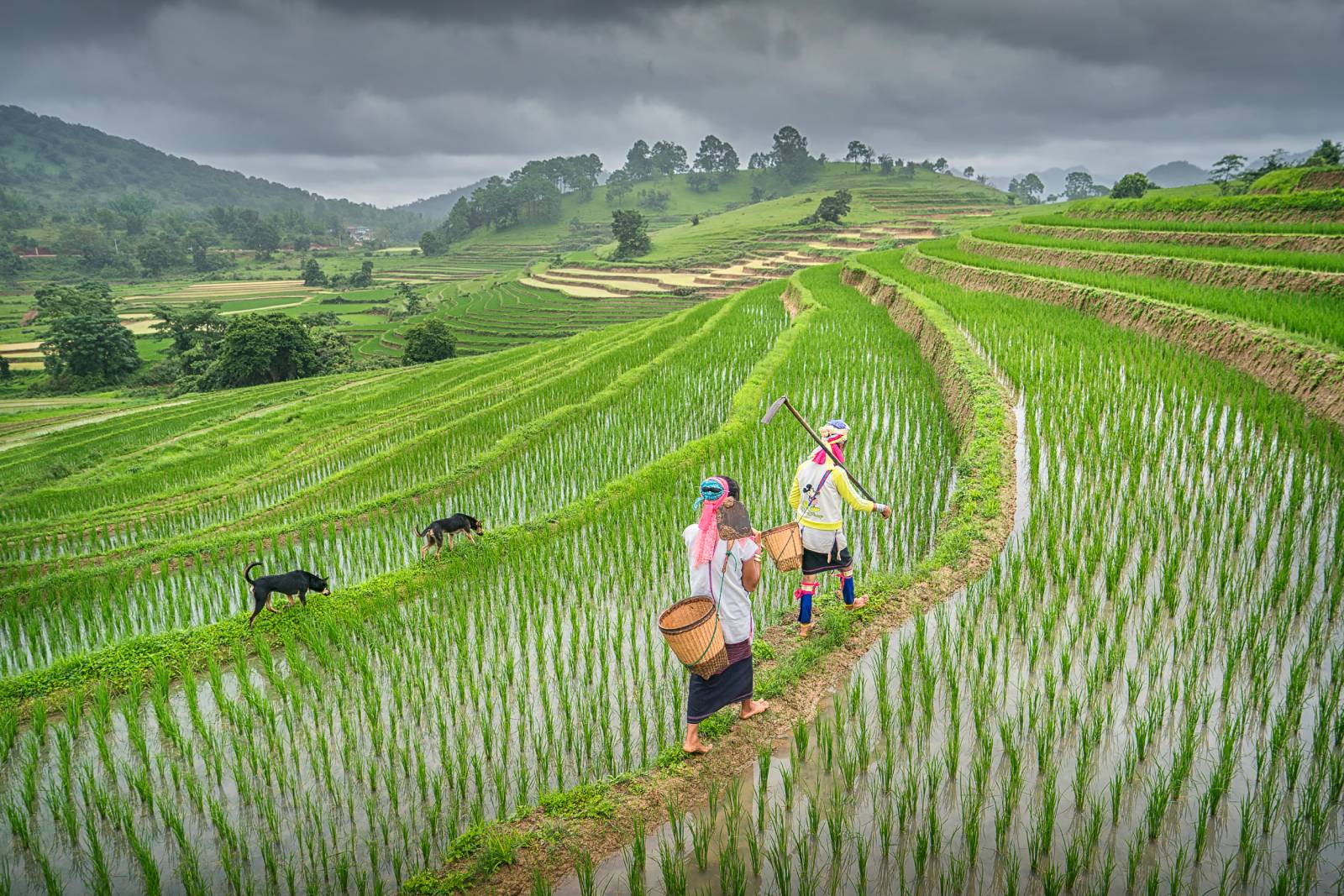
The Beginning of a Day’s Work
Photographer : Kyaw Zaw Lay
Kayah State, while being the smallest in Myanmar, boasts a vast array of biodiversity, offering immersive and unforgettable travel experiences. Kayah State is characterized by its plentiful hills and mountain ranges, often enveloped in mystical mountain mists and fog. You will most likely experience these stunning landscapes through overland road transportation. The Salween River, a prominent river in Kayah State, enhances its scenic beauty. In Kayah State, nine distinct ethnic groups coexist, with the Kayah and Kayan being the most significant. The Kayah people are distinguished by their bright red robes, a unique aspect of their traditional attire, while the Kayan are known for wearing multiple brass rings around their necks. These communities predominantly engage in agriculture, relying on a network of canals for irrigation to support their farming, agriculture and upland cultivation which forms the backbone of their livelihood.
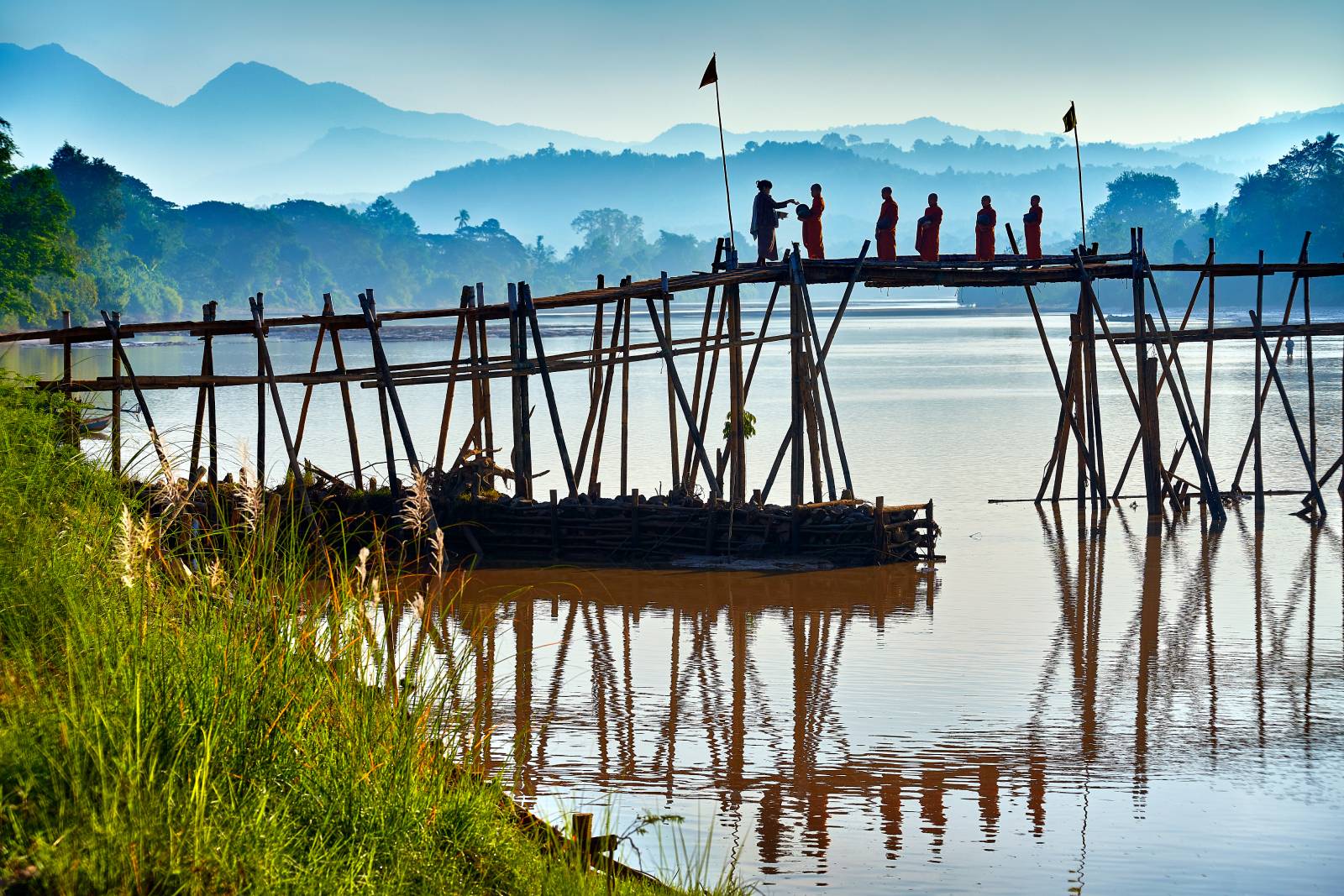
Offering Alms at Dawn
Photographer : Kyaw Win Hlaing
Myanmar people believe in the saying ‘Long life, beauty, wisdom, strength and knowledge as the five the benefits of offering alms’. With this in mind, every morning, they offer rice and curry to monks, starting their day auspiciously. The practice of offering meals and food to monks is an ancient tradition, started with the intention of sharing good karma. People offer their first meal selflessly, with full generosity and moral virtues. At dawn, one can witness individuals or groups offering food to monks in the streets near their homes or in neighborhoods. Especially on special buddhist occasions, not only in rural areas but also in major cities, you can see the joyous scenes of offering alms to the lines of monks, accompanied by the chanting of “Almsgiving (Soun Daw Byoe)” in Burmese and the melodious sound of gongs, adding to the beauty of the early morning.
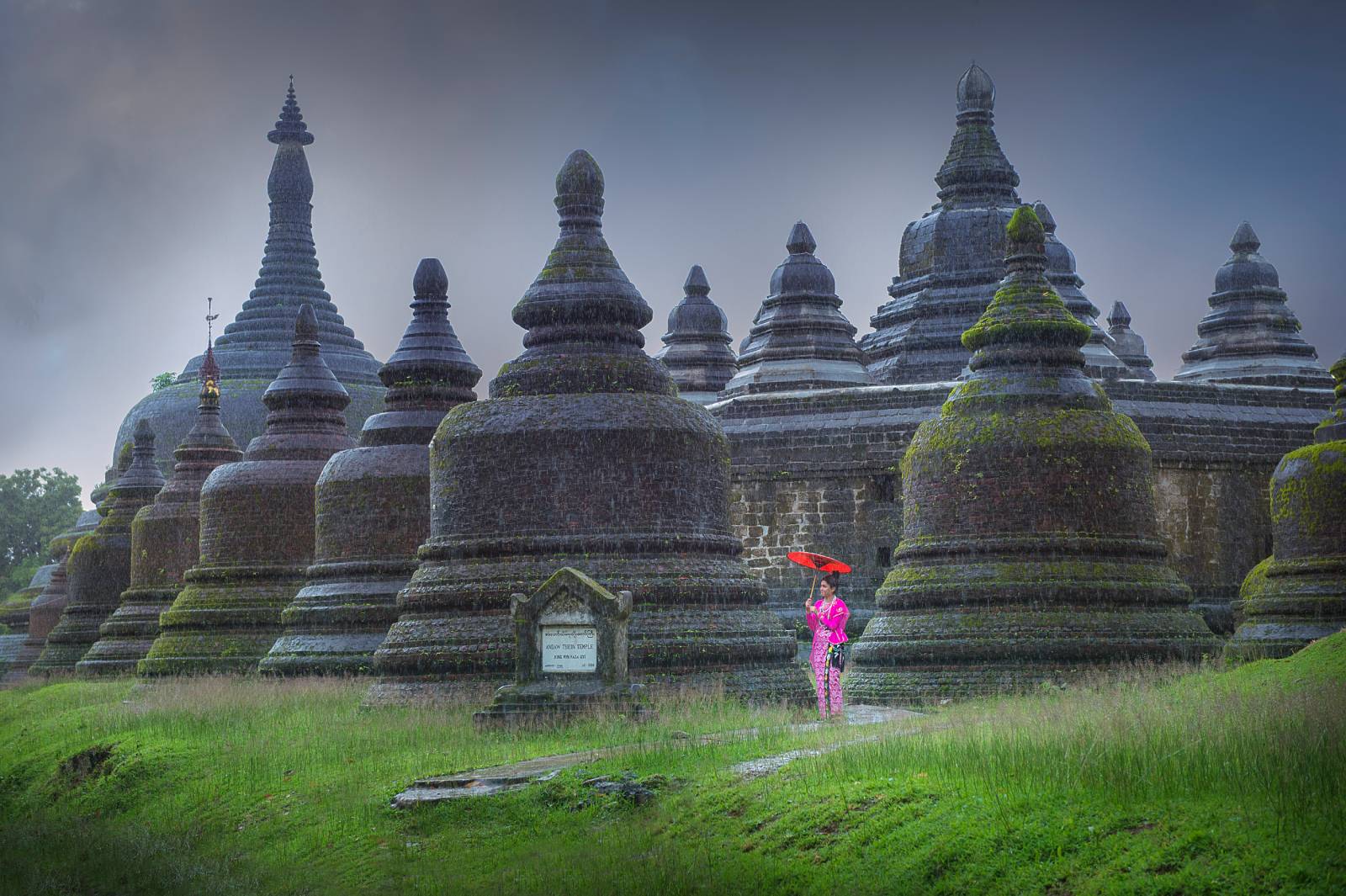
Delightful Danyawaddy
Photographer : Kyaw Zaw Lay
Rakhine State, located on the western coast of Myanmar, is a region of breathtaking beauty, rich in ancient cultural heritage, literature, and traditions. This state, known for its stunning mountainous landscapes, is home to numerous pagodas and temples, including the ancient sites of the Rakhine dynasty, such as the city of Mrauk U. Significant ancient structures like the Shaitthaung Temple, Htukkant Thein Temple, Koe Thaung Temple, Lay Myet Hna Temple, and Andaw Thein temple (Image) are places of interest that attract tourists from around the world. The Rakhine people hold deep cultural and religious traditions, often wearing traditional Rakhine dresses paired with a headband and a longyi, and Rakhine women wear a traditional dress and longyi with a cross-body sash. If one were to point out a place rich in cultural heritage within Myanmar, Rakhine State stands as a proud example.
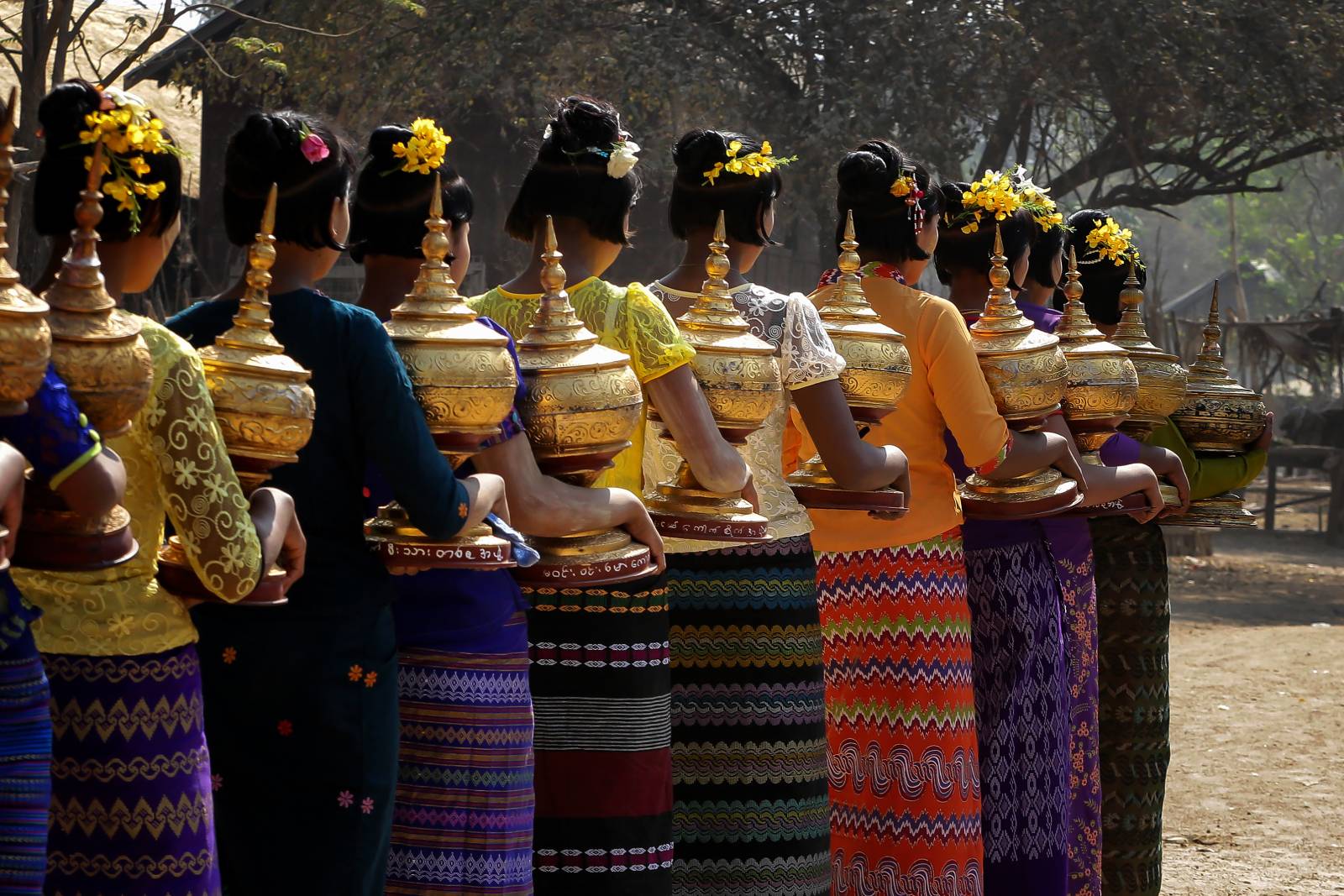
The Beauty of Myanmar Rural Customs
Photographer: Ko Sus Su
Myanmar’s distinctive style and dress customs can still be seen in rural areas to this day. In the rural regions, girls between the ages of 10 and 16 often wear circular hairstyles. The hairstyle features hair elegantly gathered into a high knot or bun at the crown, with strands meticulously styled in a continuous, circular motion. This circlet of hair gracefully frames the face, starting just above the eyebrows, sweeping over the ears, and extending around to the back and then returning to the front. As they enter womanhood, they switch to a more mature hairstyle. They regularly maintain a few frontal locks and let the rest of their hair grow long, adjusting it so that the longer part of the strands are tucked under the ear. Depending on the variations of this hairstyle, some are called Yoe Yoe Za Dout (Normal hairstyle) and some Myo Ma Za Dout (City hairstyle). These buns are often adorned with locally-sourced flowers, arranged decoratively. Additionally, these buns, along with traditional Myanmar dress, are proudly worn by rural young women at offering ceremonies, alms-giving events, and festivities, showcasing their cultural pride.
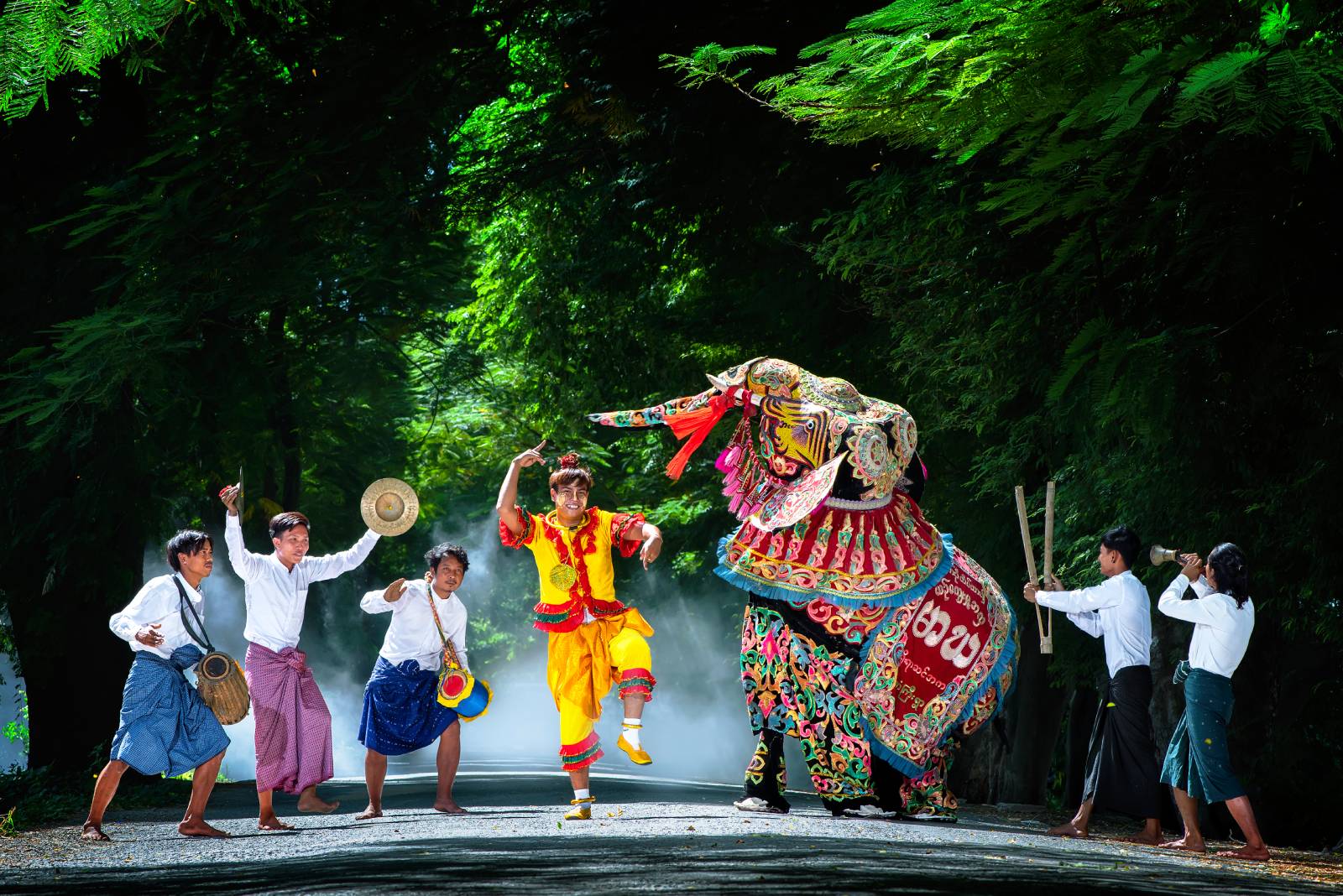
Myanmar Traditional Kyaukse Elephant Dance
Photographer : Zaw Zaw Kaung San
Originating over a century ago in Kyaukse town of Myanmar, the Thadingyut Festival is an annual event held on the 14th waxing day and the full moon day of the Thadingyut month. This festival, unique to Kyaukse and known worldwide, features a procession of large alms bowls and candlelit parades. The Kyaukse Elephant Dance Festival involves people entering elephant figures made of bamboo and paper, competing in drumming and dancing joyously around the town. On this day, the elephants are adorned in their most beautiful decorations, with the sounds of drums, cymbals, and bamboo clappers enhancing the competitive spirit of the elephant dance and beauty contests, creating an exceptionally vibrant atmosphere. These elephant figures, initially started with traditional painting, have evolved to include more ornate decorations using gold thread, glass mosaic, and various types of sequins for head and back covers, enhancing their elegance and beauty.
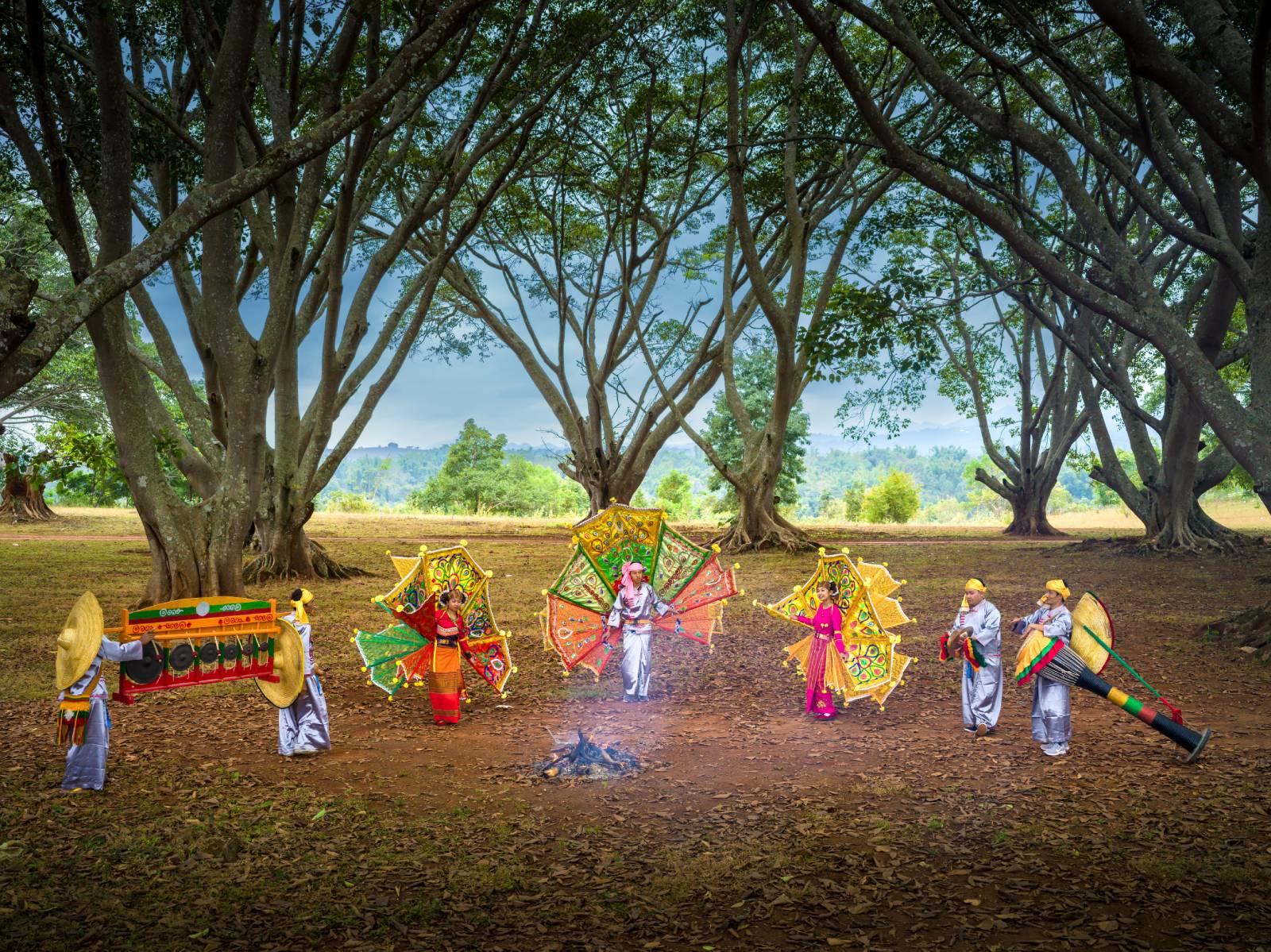
Shan Traditional Keinayi Keinaya Dance
Photographer: Kyaw Kyaw Win
When speaking of the Shan ethnic group in Shan State, one often thinks of the Keinnayi Keinaya dance. This dance is a significant cultural tradition among the Shan people. On the full moon night of Thadingyut, it is believed that the Lord Buddha descended from Trayastrimsha Heaven to Earth, and the people, half human and half bird, descended from Mount Meru to pay homage to the Buddha, then joyfully returned to the mountain. Observers are captivated by the elegant and unique movements of the Keinnayi Keinaya dancers, where human performers replace the original bird-like characters, leading to the creation of the Keinnayi Keinaya dance. According to the cultural traditions of the Shan ethnic group, this graceful and delicate art form, encompassing various artistic elements, is not only essential for the Shan people but is also a cultural heritage that needs to be preserved and passed down to all Myanmar nationals. This dance is a cherished cultural legacy, reflecting the rich traditions of the Shan State.
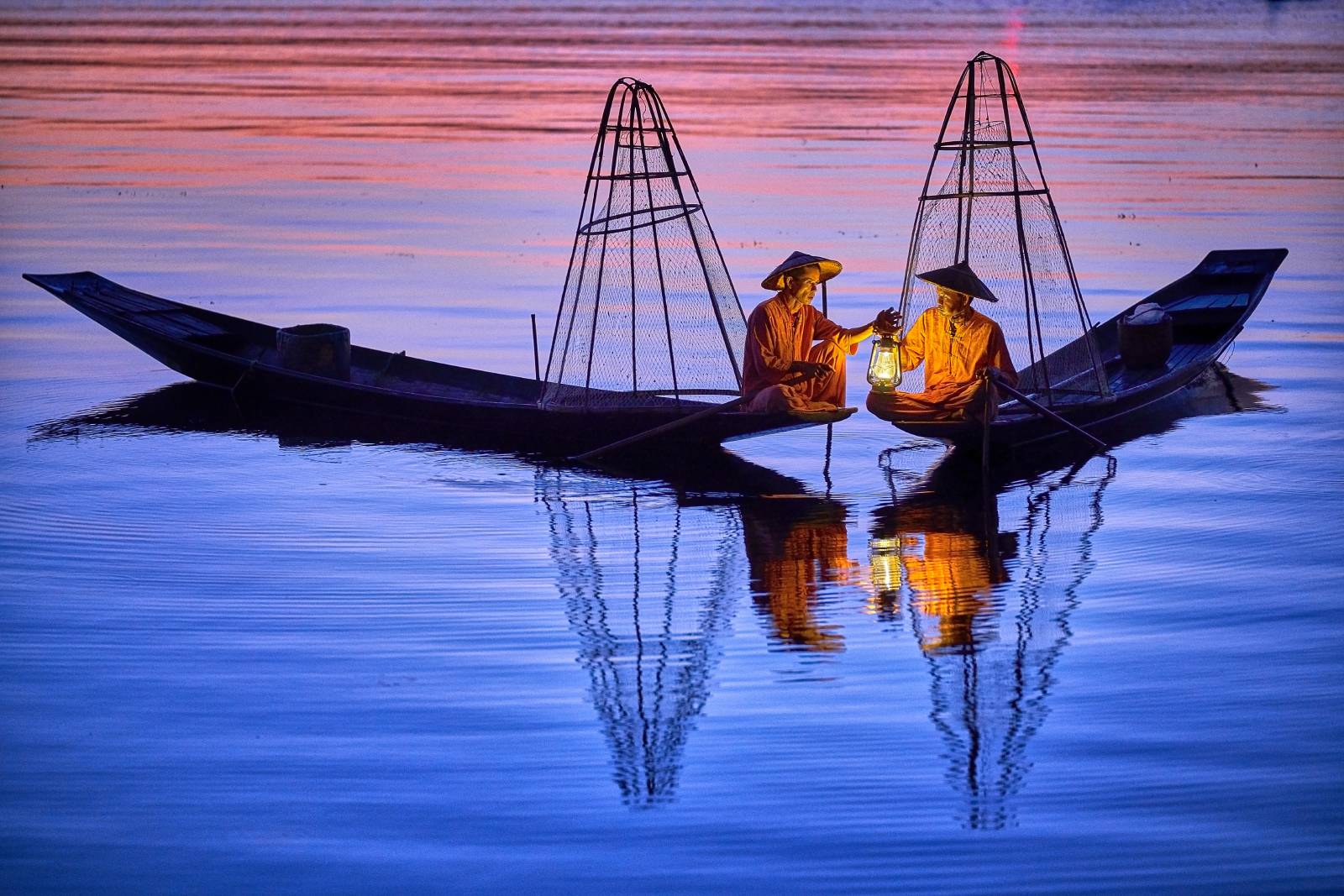
Means Of Sustenance Of A Fisherman
Photographer : Kyaw Win Hlaing
In the southern region of Shan State, Inle Lake in Nyaung Shwe city is a well-known and significant large lake of Myanmar, fascinating travelers worldwide. Situated at 900 meters above sea level, Inle Lake is renowned for its unique fishing methods used by the local Intha people. They use approximately 8-foot long ‘Saung,’ a traditional fishing conical basket made of bamboo, which they skillfully maneuver by rowing the boat with their feet. The ‘Saung’ is lightweight and sizable, and even though it’s large, the fishermen can adeptly handle it with one hand to catch fish. The fishermen paddle the boat on the lake’s surface and wait for the appearance of hot air bubbles, indicating the possible presence of fish. They then stop the boat, loosen the rope tied at the top of the ‘Saung,’ and start fishing with the descending basket. Later, they patiently wait on the boat, immersing the ‘Saung’ into the underwater weeds until a substantial number of fish enter. The Intha people of the Inle region sustain their lives through fishing, cultivating crops on floating islands, and traditional weaving.
